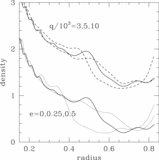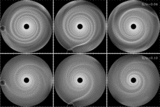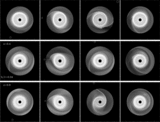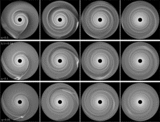Image Details
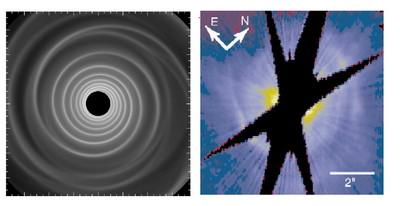
Caption: Fig. 10.
Comparison between a flyby simulation with ﹩q=0.3﹩, ﹩h/ r=0.04﹩ (simulation R) and the observed morphology of HD 100546. The simulation is shown about 3000 yr after the encounter. The image on the right is the STIS image by Grady et al. (2001). As long as the perturber is ![]() 0.1 times the mass of the star, two arms will be excited. The pitch angle of the arms is related to the time since the perturber reached periapse. We have found that many simulations are capable of exhibiting open two‐armed structure similar to that seen in the disk of HD 100546. To constrain the nature of the excitation, it is necessary to identify the object responsible for the excitation. A flyby excites short‐lived spiral structure and need not sharply truncate the disk.
0.1 times the mass of the star, two arms will be excited. The pitch angle of the arms is related to the time since the perturber reached periapse. We have found that many simulations are capable of exhibiting open two‐armed structure similar to that seen in the disk of HD 100546. To constrain the nature of the excitation, it is necessary to identify the object responsible for the excitation. A flyby excites short‐lived spiral structure and need not sharply truncate the disk.
Copyright and Terms & Conditions
© 2005. The American Astronomical Society. All rights reserved. Printed in U.S.A.




